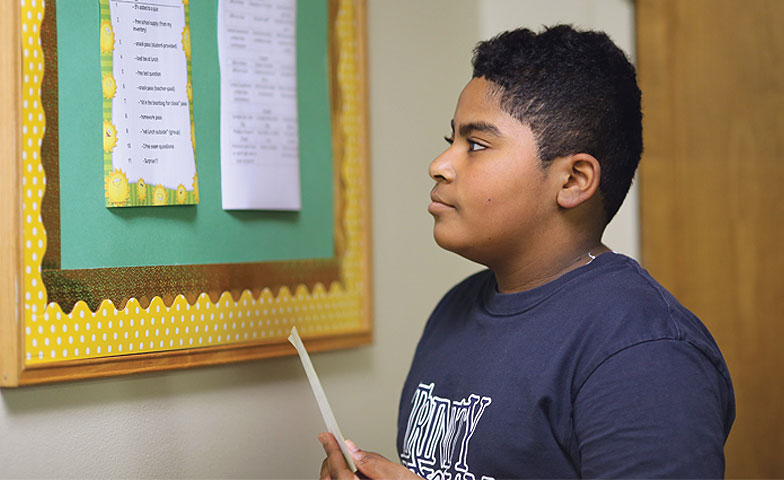An achievement system for students helps them exercise independence and goal-setting skills.
Struggling with self-confidence yet wanting independence, middle school students need opportunities to feel valued and worthy. Middle school educators need to show students that they can do things independently, they can take control of their own learning, and they can feel the satisfaction of completing a task on their own.
Of course, students can learn these things through academics, but we can provide extra opportunities for them to exercise independence and earn something besides a grade.
A few years ago, I was watching my husband play a video game. When he completed a difficult task, a notification at the bottom of the screen popped up: Achievement Unlocked! As I continued to watch him play, I realized just how appealing video game achievements are. Chasing achievements is like reading a good book: you finish one chapter and just have to read one more. Getting one more achievement seemed so attainable.
How could I translate this experience into my classroom, independent of regular school work and without a video game?
I began developing an achievement system to implement in my sixth and seventh grade history classes. It took a few years of refinement, and although the system isn’t yet perfect, I am learning along the way.
Achievement System Basics
At the beginning of the year, I develop 11 achievements. I post just a few achievements initially, adding a few more each quarter/term/semester. Students enjoy the anticipation of seeing the new achievements posted. Examples of achievements are:
- Get 100% on a quiz.
- Create a vacation brochure to a place in Africa.
- Hand-draw the flag of any U.S. state. (Display these to show off creativity and inspire others.)
- Wear a crown on your head for an entire history class period. (This appeals to the students’ fun sides.)
- Write a letter to a veteran or someone who is serving in the military. (Students realize how they can be an encouragement to someone else.)
- Write an anonymous kind note. (I deliver it.)
I give each student a 5″ x 6″ incentive chart (can be purchased at teacher stores or created on a computer) for recording achievements and rewards. As I introduce new achievements, we take time in class for students to add them to their incentive charts.
I also post the rewards. Rather than have specific rewards correspond with specific achievements, I give reward #1 when the student earns his or her first achievement, regardless which achievement it is. Reward #2 is awarded when the student earns a second achievement, and so on. Students have all year to complete the achievements in any order they choose; they are responsible for telling me when they complete an achievement.
Rewards in my classrooms include:
- Free school supply. (This comes in handy around November when students have “lost” their school supplies from the beginning of the year.)
- Free answer to a test question.
- Sitting in the beanbag during an entire class period.
- Snack Pass. (Getting to eat in class.)
Students may only complete the achievements once for credit, and each reward may be redeemed only once. I note on their chart when they earn an achievement and when they receive and redeem a reward. They choose if and when they are going to tackle an achievement—nothing is required.
Choose Your Reward
The most enjoyable part of the whole achievement system is watching the kids get excited about which achievement they choose to complete next. Seeing their personalities come through helps me get to know them better. Some tell me their entire “game plan”; others talk to each other about how many more achievements they need, spurring some competition.
I overhear comments like, “I’m going to complete a bunch of these over Christmas break,” “I’m going to save that reward for the last week of school,” “One more, and I get sweet tea,” or “How many achievements do you have left?”
Whether they realize it or not, these students are learning valuable things about themselves in the areas of decision making, responsibility, and goal setting.
Most important, they are discovering that they have the ability to make decisions for themselves—to be independent. And, of course, the rewards are nice!
Creating the Achievements
|
Choosing the Rewards
|

